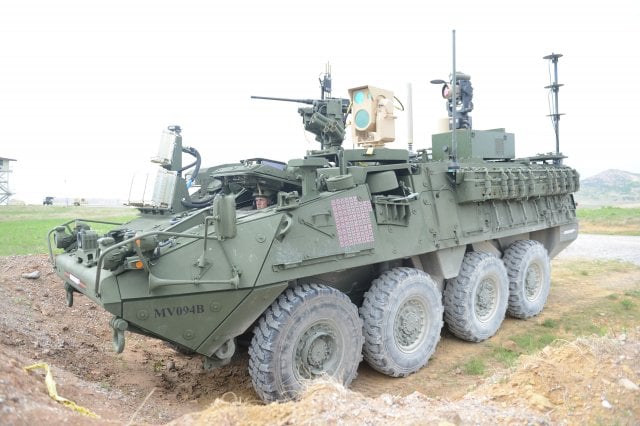Army Struggles To Streamline Its Networks For War
Posted on
ARLINGTON: As the Army hardens its networks against Russian-style jamming and hacking, it can’t afford the time or money for another high-tech, high-cost, multi-year mega-program like the failed Future Combat Systems. Instead, the service mostly has to make the best of what it has. That requires an array of unglamorous improvements to its crucial networks:… Keep reading →
Army Chief Milley Turns To Industry For Network Overhaul
Posted on
ARLINGTON: Want to sell information technology to the US Army? Then you need to write this down: Paul.A.Ostrowski.mil@mail.mil. That’s the email of the general seeking industry’s input — historically something of a struggle for the service — as the Army reviews and overhauls its networks. The Army’s long-term goal: a single unified network connecting everything from the… Keep reading →
Army Boosting Laser Weapons Power Tenfold
Posted on
ARLINGTON: The Army is dialing up its lasers, from 5 to 10 kilowatt weapons that torched quadcopters in successful tests to 50 to 100 kW weapons that could kill helicopters and low-flying airplanes — and, possibly, blind cruise missiles as well. Given rising anxiety over Russia’s Hind gunships, Frogfoot fighters, and Kalibr missiles, the technology… Keep reading →
The Russians Are Coming: The Army’s Best Case For Modernization
Posted on
WASHINGTON: The US Army has blown billions on weapons that never got built, so Congress is understandably wary of funding Army modernization. A senior Hill aide told us today that if the service wants money to modernize, it must convince Congress that its requests are in response to a specific threat the legislators care about, namely… Keep reading →
Space Corps, What Is It Good For? Not Much: Air Force Leaders
Posted on
CAPITOL HILL: The nation does not need a new armed service specializing in space, the leaders of the Air Force said today in rejecting a House Armed Services Committee plan. In fact, they said, carving a “Space Corps” out of the Air Force — which handles most space missions today — would only make it… Keep reading →
$49M For Multi-Domain Wargames Tops PACOM Wishlist
Posted on
WASHINGTON: “To counter our near-peer adversaries” — read Russia and China — US Pacific Command wants $530 million of unfunded priorities that didn’t fit in the 2018 budget request, from better bases to more torpedoes. The top item: $49 million more for “multi-domain battle exercises,” wargames testing a new Army-led concept for future warfare against… Keep reading →
The War Algorithm: The Pentagon’s Bet On The Future Of War
Posted on
Thinking about robots and war often brings to mind HAL, the apparently well-meaning but ultimately destructive computer in 2001, or the metallic creatures of death in the Terminator series. Today, however, the Pentagon wants to push the concept in a different direction. With advanced adversaries like Russia and China copying the smart weapons, stealth fighters, and… Keep reading →
Let Leaders Off The Electronic Leash: CSA Milley
Posted on
ARMY & NAVY CLUB: To win the fast-paced and brutal battles of the future, Army generals must let their subordinates off the leash, the Chief of Staff said here yesterday. “What we do, in practice, is we micromanage and overly specify everything the subordinate has to do, all the time,”Gen. Mark Milley told an Atlantic… Keep reading →
No More Iron Mountains: Lighter Logistics Key To Multi-Domain Battle
Posted on
A grim vision of future battlefields has the Army urgently exploring every option to streamline its logistics, everything from cargo drones to “compact fusion reactors.” Moving iron mountains of supplies has been a signature strength of the US military since the Civil War. But against an adversary with precision weapons, those sprawling supply dumps,… Keep reading →
Iraq: Proving Ground For Multi-Domain Battle
Posted on
ARMY WAR COLLEGE: The brutal ground war in Iraq holds vital lessons for sophisticated future operations in the Pacific, Australian Maj. Gen. Roger Noble said today. Military pundits often draw a sharp distinction between what they consider low-tech warfare against irregular forces, as in Iraq, Afghanistan, and Syria, and high-tech war against states like China… Keep reading →










